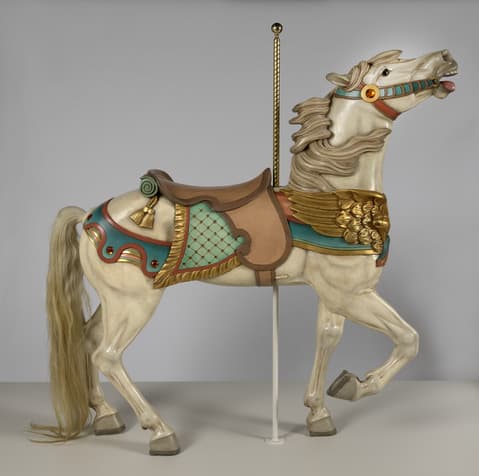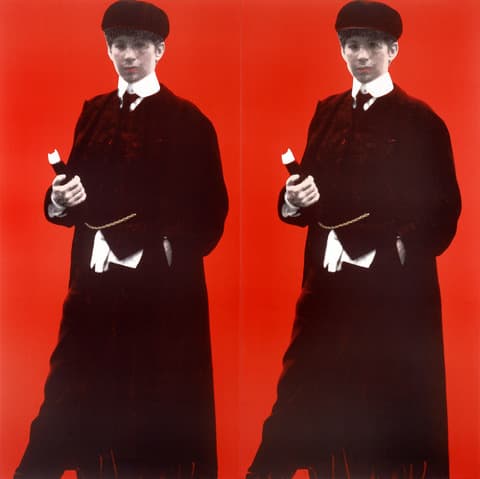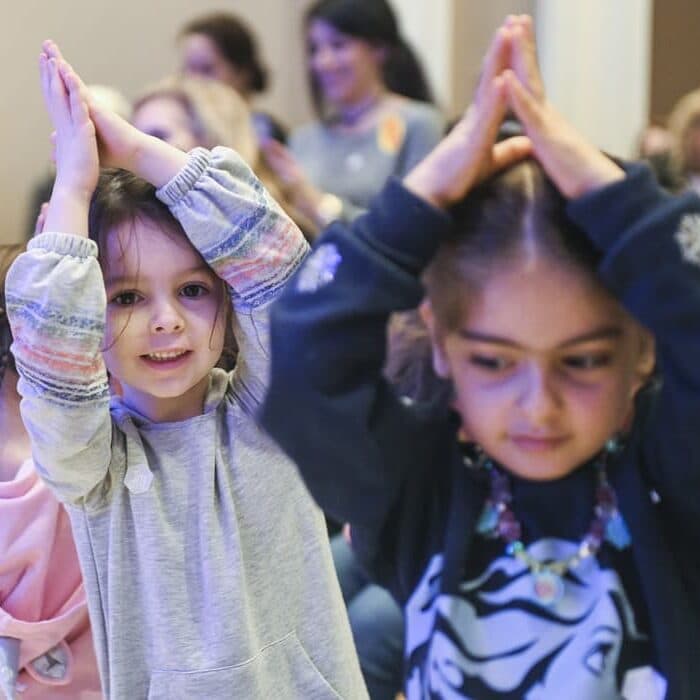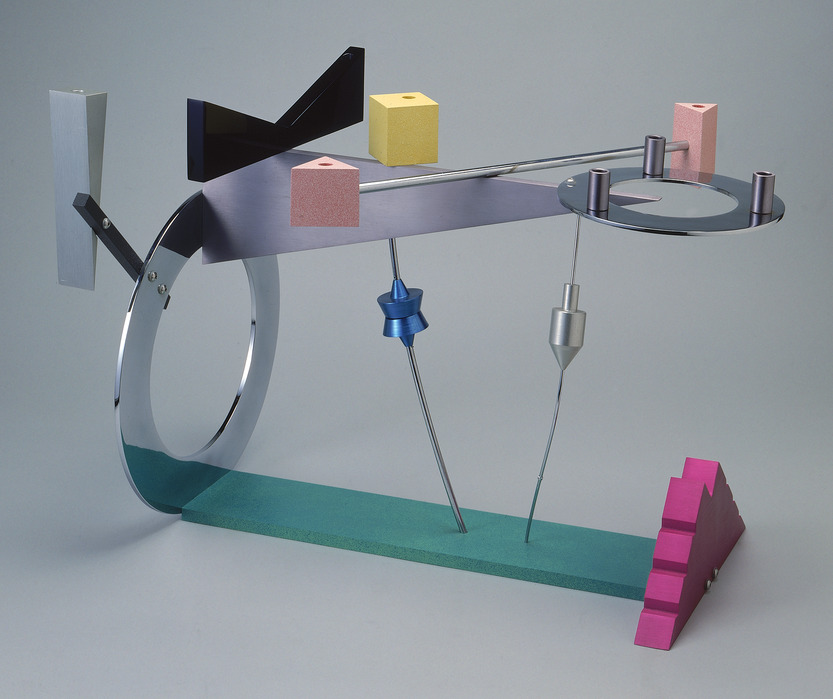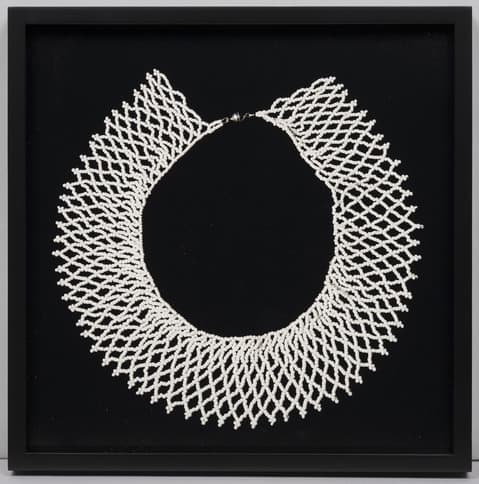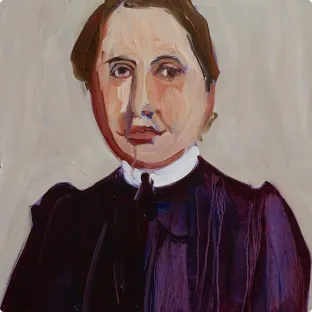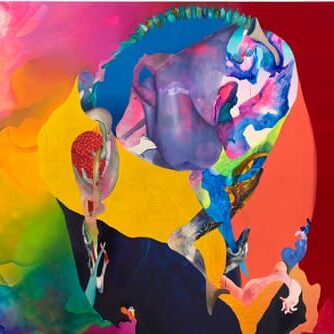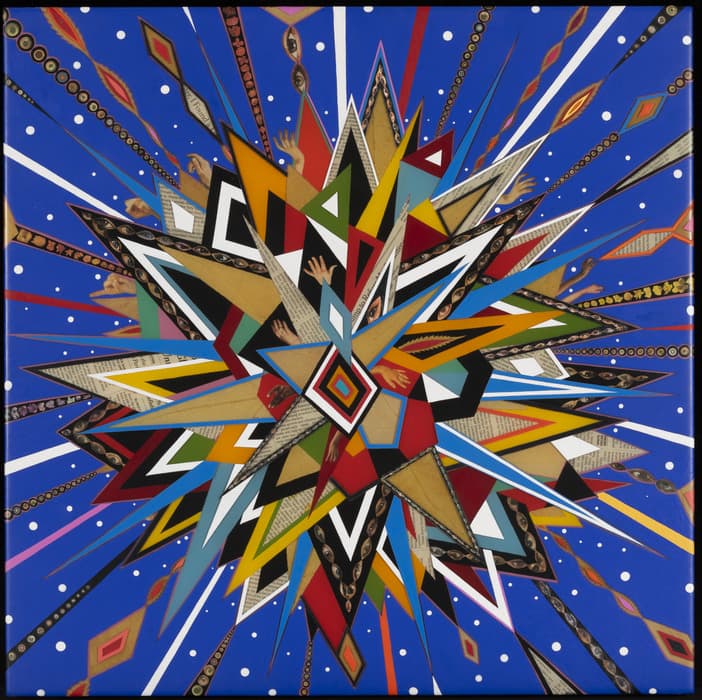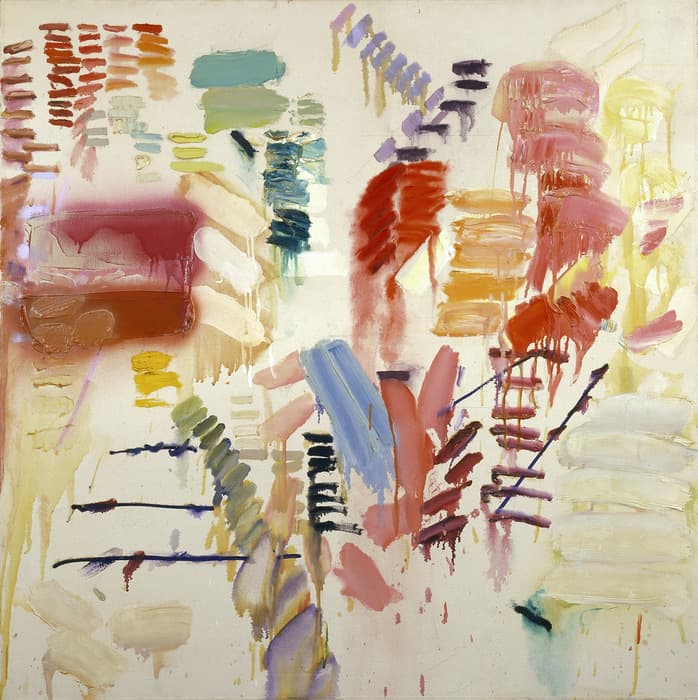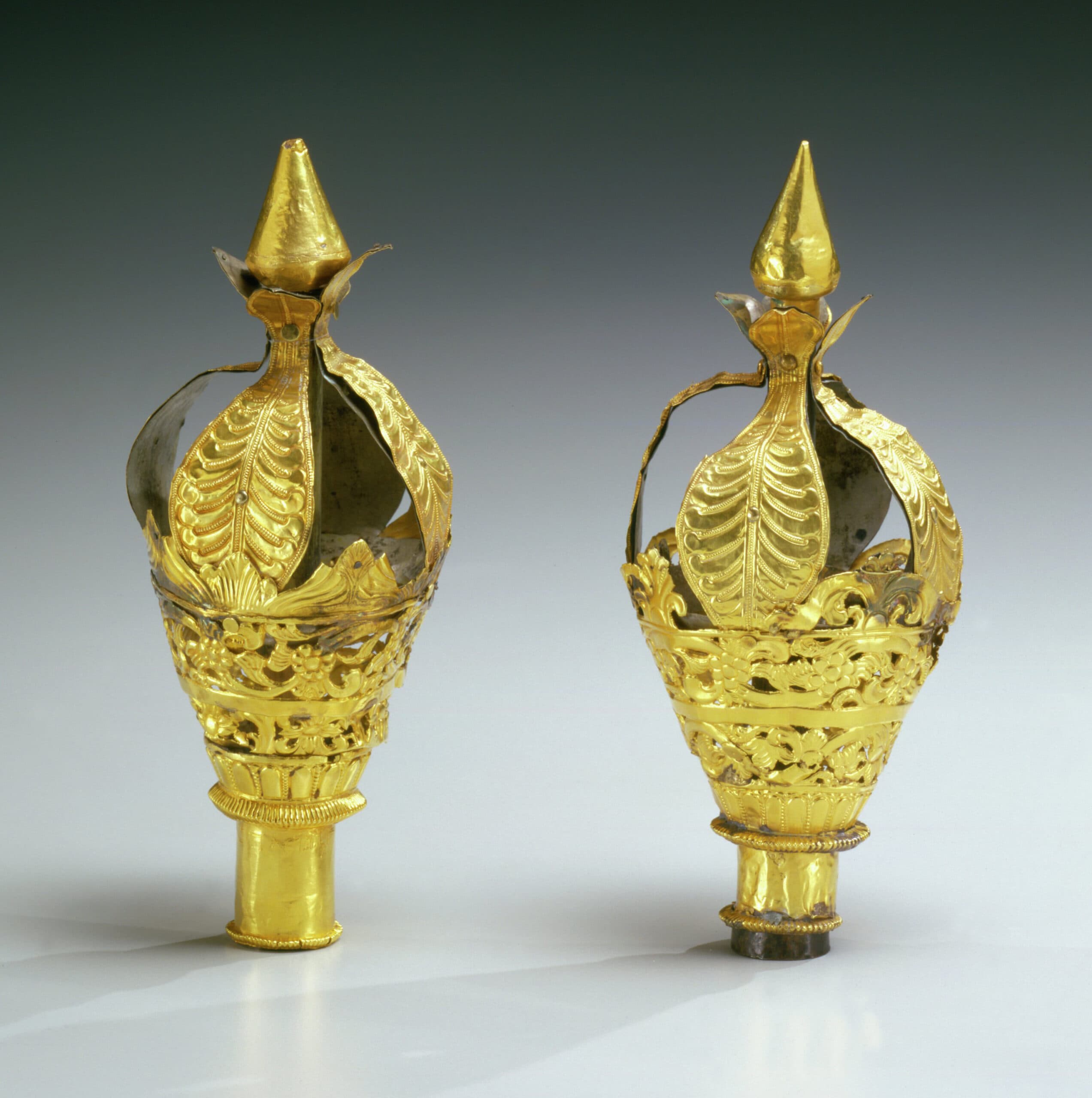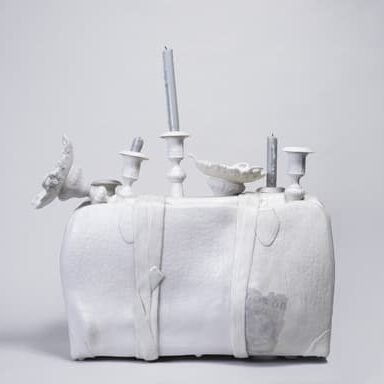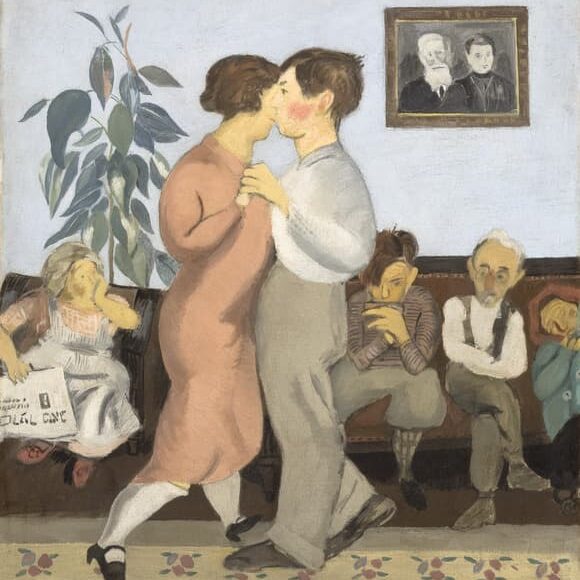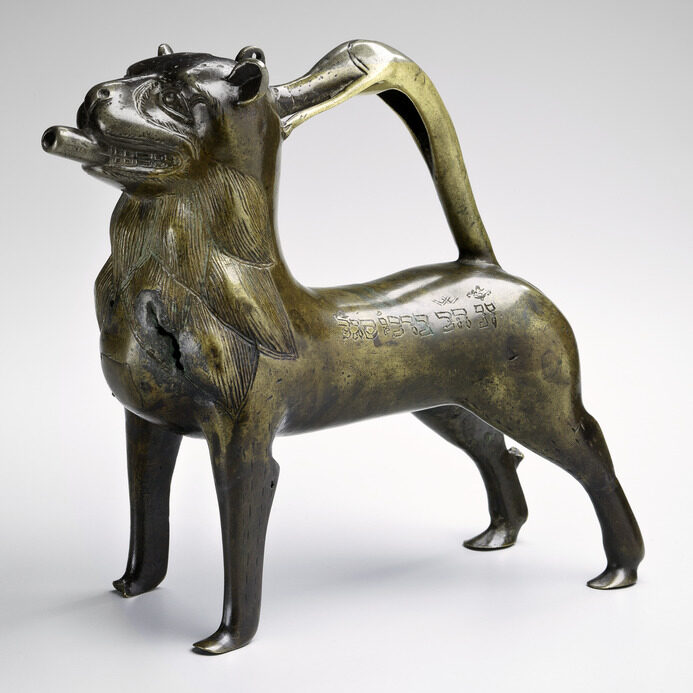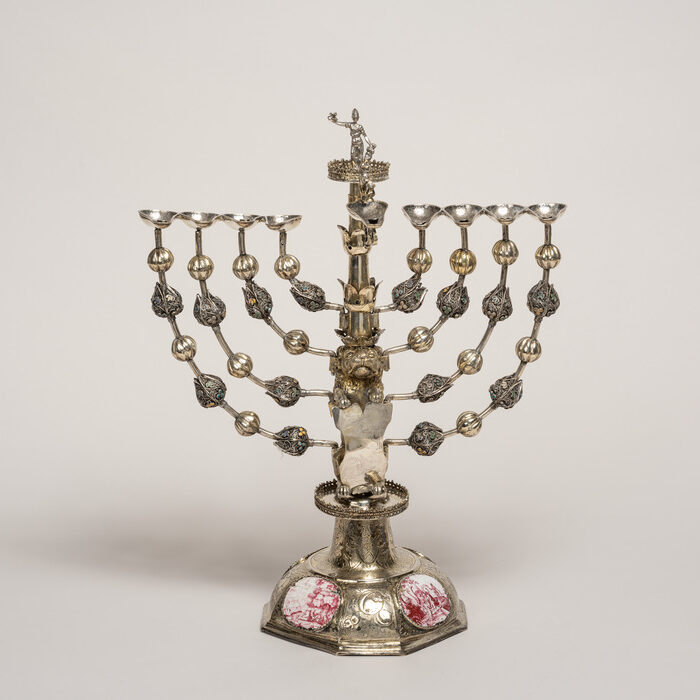
New York, NY – The Jewish Museum's expanded slate of lectures, discussions, and events continues in January 2015 with a concert by renowned cellist Maya Beiser; a gallery walkthrough of the exhibition From the Margins: Lee Krasner | Norman Lewis, 1945-1952 led by artists Louise Fishman and Dona Nelson; a special studio art workshop for adults taught by Yevgeniya Baras; and a panel on contemporary video art featuring artists Joan Jonas, Ken Okiishi, and Lucy Raven.
Further program and ticket information is available by calling 212.423.3200 or online at TheJewishMuseum.org/calendar. The Jewish Museum is located at Fifth Avenue and 92nd Street, Manhattan.
PROGRAM SCHEDULE – JANUARY 2015
Studio Workshop: Abstraction for Adults
Sunday, January 11, 1:30 pm – 5:30 pm
Participants will journey from figuration to abstraction through a sequence of drawing, collage, stenciling, and painting in this afternoon studio workshop taught by contemporary artist Yevgeniya Baras. Following a guided tour of the exhibition From the Margins: Lee Krasner | Norman Lewis, 1945 – 1952, Baras will help attendees explore methods of abstraction and create paintings inspired by the innovative techniques in the work of Krasner and Lewis.
Based in Brooklyn, New York, Yevgeniya Baras has taught university-level art classes for the past eight years, and holds BA and MS degrees from the University of Pennsylvania and an MFA in Painting and Drawing from the School of the Art Institute of Chicago. She has exhibited her work in several New York City galleries and internationally, including exhibitions in Jerusalem, Israel. She was named a 2014 recipient of the Rema Hortmann Foundation's Emerging Artist Prize. Baras was also recently profiled in Art in America for her curatorial work, and is co-founder of Regina Rex Gallery, located in lower Manhattan.
From the Margins: Lee Krasner I Norman Lewis, 1945-1952 features key 1940s and 1950s works by two powerful painters during a transformative period in American art when both artists were experimenting with innovative approaches joining abstraction and culturally-specific references. Lee Krasner (1908-1984) and Norman Lewis (1909-1979) were major contributors to Abstract Expressionism but as a woman and as an African American, respectively, they were often overlooked in mainstream criticism of the time.
Course fee: $35 general; $28 Jewish Museum members. All materials are included in the course fee.
Writers and Artists Respond – Dona Nelson and Louise Fishman
Thursday, January 15, 6:30 pm
Artists Dona Nelson and Louise Fishman, who belong to and elaborate on the tradition of American abstraction present in From the Margins: Lee Krasner | Norman Lewis, 1945 – 1952, lead a gallery walkthrough of the exhibition. Both painters share an interest in color, gesture, and material exploration and each had work featured in the most recent Whitney Biennial. This continues the series Writers and Artists Respond, thought-provoking discussions and performances led by artists, musicians, and writers in the Museum's exhibition galleries.
Since participating in the Whitney Independent Study Program in the late 1960s, Dona Nelson has painted steadily, while never settling into a signature style or letting herself repeat past experiments. Her work nonetheless can be identified by its bold use of color and experimentation with texture as well as by two-sided paintings stitched with dyed thread, allowing paint to seep through untreated canvases, emphasizing their structure and surface. Nelson's improvisatory process involves building up a surface over months as the traces of her drips, pours, and scrapes accumulate, revealing the effects of time on the work. She serves as Professor of Painting and Drawing at Tyler School of Art, Temple University, and has held recent visiting teaching appointments at Yale University, Boston University, Denison University and Bard College. Nelson was a 2013 recipient of the Artist Legacy Foundation Award and has participated in numerous solo and group exhibitions throughout her career, Recent exhibitions include Phigor at Thomas Erben Gallery, Outside the Lines, Contemporary Arts Museum Houston, and the 2014 Whitney Biennial.
While Louise Fishman's abstractions do not openly narrate the events of her life, they are certainly rooted in her cultural, political and emotional experiences. Born in Philadelphia in 1939, Fishman was active in the feminist movement of the late nineteen-sixties and early seventies. During this time, she temporarily abandoned painting for sculptural and material investigations that more closely related to her peers' pursuit of a distinctly feminine art. While this period of experimentation ultimately influenced the subsequent process and materials of her art making, Fishman's return to abstract painting was more directly anticipated by her charged 1973 series of “Angry Women” paintings. In these energetic word paintings, names of fellow women artists and activists were accompanied by the word, “angry.” David Deitcher quotes Catherine Lord in his analysis of these works: ” '…the 'Angry Paintings,' with their confusion of letters and color, their overlays of slashes and loops, their fields of muddied pigment, their rough edges and archaeological slices, were Fishman's route home.' ” Importantly, Fishman returned to painting just as artistic discourse claimed it “dead”-postmodernism reigned, yet Fishman remained dedicated to her unique version of Abstract Expressionism. In this way she reinvented and expanded the understanding of abstract painting, an artistic vernacular largely defined by the machismo of the American male artist. In addition to her continued political activism, both with feminism and with gay and lesbian rights, Fishman drew profound inspiration from a 1988 trip to Eastern Europe and the Holocaust concentration camps of Auschwitz and Terezín. The experience brought her closer to her Jewish identity and resulted in a solemn and reverential group of works titled “Remembrance and Renewal.” Small amounts of silt from the Pond of Ashes at Auschwitz, mixed with beeswax, were incorporated into the paintings, furthering their somber impact and enforcing the thoughtful materiality of Fishman's process.
Free with Pay-What-You-Wish Admission; RSVP Recommended
Dialogue and Discourse – Universal Pictures: Considering Contemporary Video Practice
Thursday, January 22, 6:30 pm
This roundtable discussion will consider the ways in which history, materials, process, and performance intersect with contemporary video and moving-image practice. Participants include artists Joan Jonas, Ken Okiishi, and Lucy Raven. Jennifer West, artist and Assistant Professor of Fine Arts Practice, Roski School of Art and Design, USC, will moderate. This program continues Dialogue and Discourse, a series of evening conversations inspired by current exhibitions explores artistic practice, global perspectives, and cultural issues.
Joan Jonas is an American performance and video artist, filmmaker, draughtsman and printmaker. She was particularly influenced by her experience of the New York art scene in the early to mid-1960s and by the work of John Cage and Claes Oldenberg and their interest in 'non-linear' structure. From the early 1970s her work became increasingly symbolic, game-like and ritualistic: in, for example, Organic Honey's Visual Telepathy (1972) Jonas took the role of 'Organic Honey', a part-real, part-mythical and part-fantastical woman, who explores the possibilities of female imagery and eroticism, keeping her narcissism in check by scanning her own image in a video monitor. Jonas's performances, films and videos are characterized by de-synchronized, non-linear, fragmentary features. The recipient of numerous honors and awards, Jonas's most recent solo exhibitions include those at Centre for Contemporary Art, Kitakyushu Project Gallery, Japan (2014); Kulturhuset Stadsteatern Stockholm (2013); Proyecto Paralelo, Mexico (2013); Contemporary Arts Museum, Houston (2013); Bergen Kunsthall, Norway (2011); and Museum of Modern Art, New York (2010). She has been represented in dOCUMENTA in Kassel, Germany, six times since 1972, and has had major retrospectives at the Stedelijk Museum, Amsterdam; Galerie der Stadt Stuttgart, Germany; and the Queens Museum of Art, New York. Jonas will represent the United States at the 2015 Venice Biennial.
Ken Okiishi uses video, performance, and installation to explore the relationships between matter and memory, and examine the perception and action of a digitally networked culture. Okiishi subverts the material claims of various media, exploiting the glitches that occur when language and images begin to fall apart. Recent solo exhibitions include: MIT List Visual Arts Center, Cambridge, Massachusetts (2013); Hessel Museum of Art, Bard Center for Curatorial Studies (2013); Take Ninagawa, Tokyo (2012); Alex Zachary, New York (2010); and Mehringdamm 72, Berlin (2010). Recent group exhibitions include: Whitney Museum of American Art, New York (2014); Frieze Art Fair, London (2013); Artists Space, New York (2013); Arnolfini, Bristol (2013); Kunsthaus Bregenz (2013); Kunsthalle Bern (2012); and White Columns, New York (2012). Ken Okiishi lives and works in New York and Berlin.
Lucy Raven is an artist based in New York. She works primarily with animation and the moving image. Her movies and installations have been shown at art and film spaces internationally, including the Museum of Modern Art, New York; MuMOK, Vienna; the Hammer Museum, Los Angeles; Wavelengths at the Toronto International Film Festival; Forum Expanded at the Berlinale, and in the 2012 Whitney Biennial, among others. She is currently an artist in residence at the Experimental Media and Performing Arts Center (EMPAC) at RPI in Troy, NY. Upcoming exhibitions include at EMPAC; Portikus, Frankfurt, Germany, and the Yerba Buena Center for the Arts, San Francisco. Raven worked as an editor at BOMB Magazine for seven years, where she remains an editor-at-large. She was co-founder and co-editor of an audio magazine called The Relay Project, and recently coproduced a series of web-based newsreels for the Oakland Museum of California.
Los Angeles-based artist Jennifer West makes silent films, manipulating the film celluloid by dousing it with perfume, alcohol, mascara, or pepper spray, skateboarding on it, or dragging it through tar pits. West's practice is characteristically influenced by urban mythology, folklore, and popular culture, and often addresses issues of the body, of gender, and of self-presentation. She is also known for her “Zines” – DIY photo booklets of production stills of the making of the films- that she gives away at her exhibitions. Major solo exhibitions include Vdrome (2014); Marc Foxx, Los Angeles and Mallorca Landings, Spain (2013); High Line Art, New York, NY (2012); S1 Artspace, Sheffield, England (2012); Vilma Gold, London (2011/2008); Marc Foxx Gallery, Los Angeles (2011/2009/2007); Contemporary Art Museum, Houston (2010); Western Bridge, Seattle (2010); Kunstverein Nuremberg, Nuremberg, Germany (2010); Transmission Gallery, Glasgow (2008); and White Columns, New York (2007). West has exhibited widely in museums and art institutions in the past, including MOCA, Cleveland, OH; Saatchi Gallery, London; Seattle Art Museum; Tate Modern; Institute of Contemporary Art, Philadelphia; and Tel Aviv Museum of Art. She was Artist in Residence at the MIT List Visual Arts Center in 2011. Jennifer West lives and works in Los Angeles.
Free with Pay-What-You-Wish Admission; RSVP Recommended
Concert: Bang on a Can: Beauty is Power
Featuring Maya Beiser
Thursday, January 29, 7:30 pm
Acclaimed cellist Maya Beiser's concert features beautiful music by powerful women, from Hildegard von Bingen to Janis Joplin and Imogen Heap, Anna Clyne to Yoko Ono, and explores themes of beauty, spirituality, and ritual. The program will include O Virtus Sapientiae by Hildegard von Bingen; Summertime by Janis Joplin; the U.S. premiere of Rest These Hands by Anna Clyne; Byzantine Chant arranged by Aleksandra Vrebalov; Maya's own arrangement of Hide and Seek by Imogen Heap; and a version of Yoko Ono's seminal performance Cut Piece presented in collaboration with the innovative design trio threeASFOUR. Tied to the Museum's exhibition, Helena Rubinstein: Beauty Is Power, the first exhibition about the legendary cosmetics entrepreneur and trendsetting art collector Helena Rubinstein, the performance is the third concert of the Jewish Museum and Bang on a Can's partnership to produce a series of dynamic musical performances at the Museum from June 2014 to May 2015, inspired by the Jewish Museum's diverse slate of exhibitions.
The New Yorker famously once referred to Maya Beiser as “the cello goddess.” She has captivated audiences worldwide with her virtuosity, eclectic repertoire, and relentless quest to redefine her instrument's boundaries. The Boston Globe declares, “With virtuoso chops, rock-star charisma, and an appetite for pushing her instrument to the edge of avant-garde adventurousness, Maya Beiser is the post-modern diva of the cello.” Raised in the Galilee Mountains in Israel, surrounded by the music and rituals of Jews, Muslims, and Christians, while studying classical cello repertoire, Maya has dedicated her work to reinventing solo cello performance in the mainstream classical arena. A featured performer on the world's most prestigious stages including Lincoln Center, Carnegie Hall, London's South Bank Centre, Sydney Opera House, and the Beijing Festival, she has collaborated with artists across a wide range of musical styles, including Brian Eno, Philip Glass, Steve Reich, Tan Dun, Evan Ziporyn, and Carter Burwell, among many others. Maya's 2012 production, Elsewhere: A CelloOpera, premiered at Carolina Performing Arts followed by a sold-out run at the BAM Next Wave Festival. Her latest project All Vows explores the dichotomy between the physical, external world and the inner landscape of our secret selves, and premiered at the Yerba Buena Center in 2014.
Helena Rubinstein: Beauty Is Power is the first museum exhibition to explore the ideas, innovations, and influence of the legendary cosmetics entrepreneur Helena Rubinstein (1872-1965). By the time of her death, Rubinstein had risen from humble origins in small-town Jewish Poland to become a global icon of female entrepreneurship and a leader in art, fashion, design, and philanthropy. As the head of a cosmetics empire that extended across four continents, she was, arguably, the first modern self-made woman magnate. Rubinstein was ahead of her time in her embrace of cultural and artistic diversity. She was not only an early patron of European and Latin American modern art, but also one of the earliest, leading collectors of African and Oceanic sculpture. The exhibition will explore how Madame (as she was universally known) helped break down the status quo of taste by blurring boundaries between commerce, art, fashion, beauty, and design. Through 200 objects – works of art, photographs, and ephemera – Helena Rubinstein: Beauty Is Power reveals how Rubinstein's unique style and pioneering approaches to business challenged conservative taste and heralded a modern notion of beauty, democratized and accessible to all.
Tickets: $18 adults; $15 students and seniors; $12 Jewish Museum and Bang on a Can List members
A Closer Look Gallery Talks
Mondays, January 12 and 26, 1:00 pm
Educators and curators engage visitors in discussions about select works of art in the exhibition, From the Margins: Lee Krasner | Norman Lewis, 1945-1952.
Free with Museum Admission
Support
Public programs are made possible by endowment support from the William Petschek Family, the Trustees of the Salo W. and Jeannette M. Baron Foundation, William Halo, Benjamin Zucker, the Marshall M. Weinberg Fund, with additional support from Marshall M. Weinberg, the Rita J. and Stanley H. Kaplan Foundation, the Saul and Harriet M. Rothkopf Family Foundation and Ellen Liman. Public support is provided by the New York City Department of Cultural Affairs.
Press contacts
Anne Scher, Molly Kurzius, or Alex Wittenberg
The Jewish Museum
212.423.3271 or [email protected]
